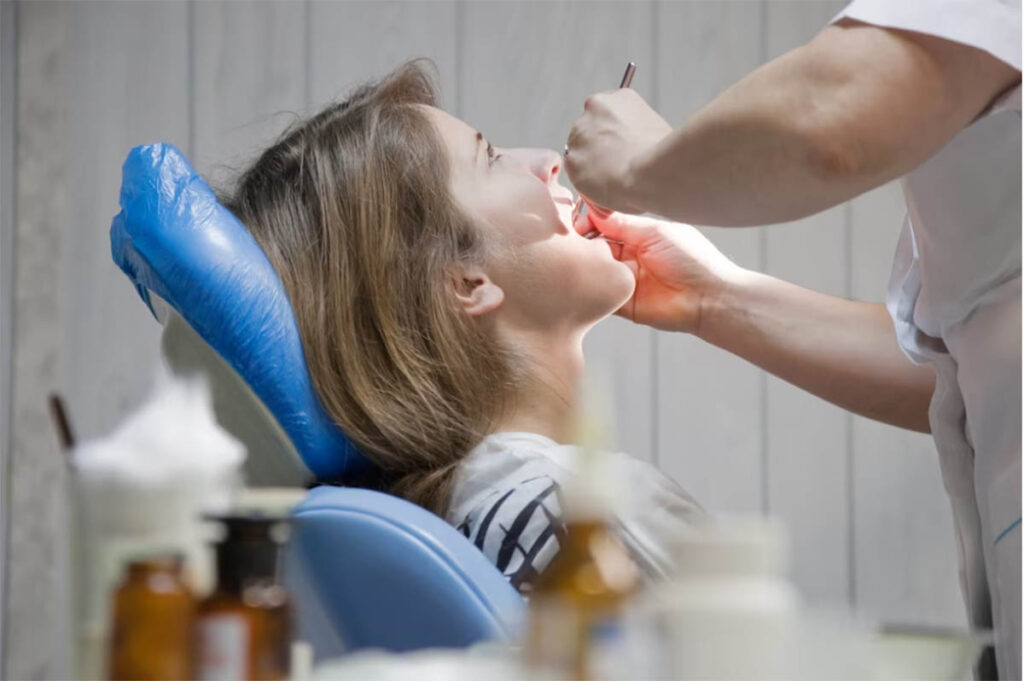Introduction
Temporomandibular Joint (TMJ) pain is a prevalent and debilitating condition that affects millions of people worldwide. The temporomandibular joint acts as a sliding hinge, connecting the jawbone to the skull and allowing you to talk, chew, and yawn. When the TMJ becomes painful or dysfunctional, it can severely impact your quality of life, making even simple daily tasks like eating and speaking painful and challenging. In this comprehensive 3000-word article, we will delve into the various aspects of TMJ pain, including its causes, symptoms, diagnosis, and treatment options, as well as self-care strategies to alleviate discomfort and improve overall jaw health.
Section 1: Understanding TMJ and its Anatomy
To comprehend TMJ pain, we must first understand the structure and function of the temporomandibular joint. The TMJ is a bilateral synovial joint located on each side of the face, just in front of the ears. It connects the mandible (lower jaw) to the temporal bone of the skull. The TMJ consists of several components, including the articular disc, the condyle of the mandible, and the temporal bone’s glenoid fossa.
Section 2: Causes of TMJ Pain
TMJ pain can arise due to a variety of factors, often involving a combination of physical, environmental, and psychological elements. Some common causes of TMJ pain include:
- Bruxism: Teeth grinding and clenching can exert excessive pressure on the TMJ, leading to pain and dysfunction.
- Malocclusion: An improper bite alignment can strain the TMJ, causing discomfort and inflammation.
- Trauma and Injuries: Accidents or injuries to the jaw area can damage the TMJ, resulting in chronic pain.
- Arthritis: Various forms of arthritis, such as osteoarthritis and rheumatoid arthritis, can affect the TMJ and cause pain.
- Stress and Anxiety: Emotional stress can lead to clenching of the jaw muscles, contributing to TMJ pain.
- Dental Procedures: Prolonged mouth opening during dental treatments can irritate the TMJ.
Section 3: Recognizing TMJ Pain – Symptoms and Signs

TMJ pain can manifest in a range of symptoms, which can vary from mild to severe. Common signs of TMJ pain include:
- Jaw Pain: Persistent or intermittent pain in and around the jaw joint.
- Jaw Clicking or Popping: Audible sounds when opening and closing the mouth, indicative of TMJ dysfunction.
- Limited Jaw Movement: Difficulty in fully opening or closing the mouth due to joint restrictions.
- Ear Pain: Pain or discomfort in or around the ears, often mistaken for an ear infection.
- Headaches and Migraines: TMJ pain can radiate to the head, causing headaches or migraines.
- Neck and Shoulder Pain: TMJ pain can extend to the neck and shoulder region.
Section 4: Diagnosing TMJ Pain
Diagnosing TMJ pain requires a comprehensive evaluation by a healthcare professional. The diagnosis may include:
- Medical History: The healthcare provider will inquire about your symptoms, any previous injuries, and medical history.
- Physical Examination: A thorough examination of the jaw, face, and neck to assess tenderness, muscle strength, and range of motion.
- Imaging: X-rays, MRI, or CT scans may be utilized to obtain detailed images of the TMJ and surrounding structures.
- Bite Analysis: Evaluating the alignment of the teeth and jaw to identify potential malocclusion issues.
Section 5: TMJ Pain Management and Treatment Options
The treatment approach for TMJ pain will depend on the severity of the condition and the underlying causes. Various treatment options include:
- Self-Care and Lifestyle Changes: Implementing stress-reduction techniques, avoiding hard foods, and adopting a soft diet can alleviate TMJ pain.
- Medications: Over-the-counter pain relievers, muscle relaxants, and anti-inflammatory drugs may help manage TMJ pain temporarily.
- Physical Therapy: Specific exercises and manual techniques can strengthen jaw muscles and improve joint mobility.
- Oral Appliances: Custom-made splints or mouthguards can help reduce clenching and grinding, relieving pressure on the TMJ.
- Behavioral Therapy: Managing stress and anxiety through counseling or relaxation techniques can be beneficial.
- Injections: Corticosteroid injections may be used to reduce inflammation and pain in the TMJ.
Section 6: Surgical Interventions for TMJ Pain
In severe cases of TMJ pain or when conservative treatments fail to provide relief, surgical interventions may be considered. Surgical options include:
- Arthrocentesis: A minimally invasive procedure involving the insertion of needles into the joint space to flush out debris and reduce inflammation.
- Arthroscopy: A more advanced minimally invasive technique that uses a small camera to visualize and treat joint abnormalities.
- Open Joint Surgery: In cases of significant joint damage, open joint surgery may be necessary to repair or replace damaged structures.
Section 7: TMJ Pain Prevention and Self-Care Strategies
Preventing TMJ pain and maintaining good jaw health is essential. Adopting the following self-care strategies can help reduce the risk of TMJ pain:
- Practice Good Posture: Maintain proper posture to alleviate strain on the neck and jaw muscles.
- Avoid Chewing Gum: Excessive gum chewing can contribute to jaw muscle fatigue.
- Reduce Stress: Engage in stress-reducing activities, such as yoga, meditation, or deep breathing exercises.
- Gentle Jaw Exercises: Perform gentle jaw exercises to promote jaw muscle strength and flexibility.
- Avoid Hard Foods: Steer clear of hard, chewy, or crunchy foods that can strain the TMJ.
Conclusion
TMJ pain is a complex and multifactorial condition that can significantly impact an individual’s quality of life. Understanding the causes, symptoms, diagnosis, and treatment options for TMJ pain is crucial for its effective management. Early intervention, lifestyle modifications, and a comprehensive treatment plan can help alleviate pain, restore jaw function, and enhance overall well-being. If you experience persistent jaw pain or related symptoms, consult a healthcare professional promptly for proper evaluation and guidance.


